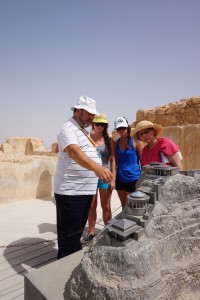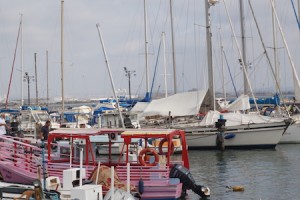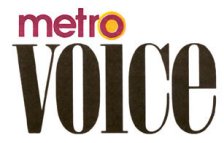Part 5. Israel: Into the Wilderness and Goodbyes



Our departure from Jerusalem was bittersweet. We had much more to experience as we headed for the wilderness of Ein Gedi passing the caves where the Dead Sea scrolls were found (some tours stop here), At Ein Gedi 3,000 years ago, David and his men hid from Saul.

you’ll be dry before you return!) College students in shorts as well as orthodox elementary students in dark, long sleeve dress are not afraid to jump in! It is truly an oasis of lush vegetation, a stark contrast to the desert and Dead Sea not far away.
Nearby at the En Gedi Kibbutz a world-renowned botanical garden is uniquely situated among

residential homes, a spa, boutique guest houses and other buildings. About 900 species of plants grow in the garden, including plants native to the region and beyond. I was drawn to a section dedicated to plants mentioned in the Bible, such as myrrh and frankincense. One eye-catching plant was the Adansonia Digitata, also called The Baobab, a huge African tree. It takes seven people or more to embrace its trunk.
Masada Still Impresses

While not featured on every tour, Masada (see our September article) is better known to Jews than Christians as the last stand of Jews for freedom after the destruction of the Temple. Atop a dry desert plateau, Herod had constructed his winter home—an amazing palace and fortress.

While important to the Jewish faith, Masada defines the beginning of the Christian faith as a movement apart from Judaism. Until the destruction of the Temple in 70 A.D., followers of Jesus were still considered a Jewish sect and many believers still considered themselves Jewish. When Rome destroyed Jerusalem and the Temple, soldiers dispersed or killed Jewish and Gentile followers of Jesus. It was at this time that the center of Christianity moved away from Jerusalem and began to develop its own identity.
The Dead Sea and Israel’s “Back Country”

We left Masada and reached Ein Bokek, a therapeutic beach and resort area on the Dead Sea — earth’s lowest elevation on land at 1,407-feet below sea level. The oxygen-rich environment, in addition to mineral-rich mud and a unique composition of salts and minerals in the water, as well as bromide in the air draw tourists worldwide for the therapeutic benefits. Most places we stayed, whether a kibbutz guest hotel or boutique hotel, offered spa services.

The Rimonim Royale Hotel featured 50 different health and beauty treatments. We joined other tourists relaxing on the beach, slathering each other with mud, and floating in the water, which is a unique experience as it is nine times saltier than the ocean, making it nearly impossible to sink!
The next morning, the tour turned adventurous as we experienced the Judean Desert from an open jeep. Heading south, we weaved through and over canyons, plateaus, steep cliffs, and the “moon crater” landscape with our good-natured Bedouin guide.
‘Opah! Opah!” shouted our Bedouin guide. It roughly translates to the cowboy cry of “Yippee-ki-yay!” It echoed through the canyons. Dwight, Hannah, and Emma were smiling with upmost delight, as I held on tightly to the jeep’s roll bar, wondering why we didn’t have crash helmets.

The driver would often pull to an abrupt stop to show us desert animals, plants, and even a cave that was as cool as the inside of our refrigerator at home. We ended at Mount Sodom, which is almost entirely made of salt. The area is the biblical location of Sodom and Gomorrah where Lot and his wife lived (Gen. 19) and where remnants of sulfur can still be found on the ground.
After a fun and wind-blown day in the desert, we returned to the hotel to clean up and pack for a late check-out.

On our way to back to Jaffa and Tel-Aviv for the final few days of our tour, we stopped at Beit Guvrin National Park, the site of the Bell Caves. The highest point of the Park is Tel Maresha, which 2 Chronicles 11:5–8 records was fortified by King Rehoboam of Judah to help repel an Egyptian attack. The man-made attraction is a series of 80 large caves connected by passageways that were quarried to extract lime for cement. The process created a bell shape in the rock. Christians are thought to have used this place as refuge because, visible on the north wall, is an early design of a cross.
–By Anita Widaman
Back to Where We Began
The Mediterranean seaport of Jaffa is the oldest continuously inhabited city in Israel. The name appears many times in the Bible. From here, Jonah embarked to Tarnish, King Kiram of Tyra sent logs for the Temple to the port, Peter had a vision of the “pure and impure” and Tabitha was brought back to life.

The modern metropolis of Tel-Aviv began as a suburb of Jaffa in 1909. Today, they’ve merged and the short walk from one to the other is easy via a promenade and park that allows

pedestrians to view fishermen and colorful, bobbing boats in the port.
We started the day in Jaffa, meandering its old streets and noticing its cosmopolitan mixture of Arab, Christian, and Jewish citizens.
As we wandered through the alleys, we found one of-a-kind clothing, jewelry, crafts and fine art. Some of the artists’ shops were their homes. Tel-Aviv is Israel’s fashion capital and the small boutiques of Jaffa confirmed this. The girls and Anita browsed the racks and found edgy designs that were fun to try on. I, meanwhile, searched for a small art print, which we collect from countries where we have traveled. Ice cream parlors were common and came in handy when we were exhausted.

Nearby was the Jaffa Flea Market, which offered antiques, as well as castoffs. Its organization made no sense, which contributed to its beauty. The presence of “classic British” furniture prompted me to wonder, “When did it get off the boat?” I could only imagine the

history these time worn pieces had seen! The Old Turkish Railway Station and the Tel-Aviv Port, previously in disrepair, are now hot spots where hip, young Israelis and tourists eat, shop and people watch.
Our leisurely wandering continued, and we returned to the Carmel Market we had visited our first night. Now, with

more time and fresh perspective, we perused a plethora of fruits, vegetables, flowers, pastries, household items—and the only Dr. Pepper we saw available for purchase the entire trip. Vendors’ stalls also overflowed with exotic spices.
The real reason we ended our tour in Tel Aviv, instead of Jerusalem, was to plan a day on the beach and enjoy the beautiful sky and gentle waves. Joggers appeared on the

promenade in the morning and volleyball games continued late into the night. Sunbathers were present from sunup to sundown.
The beachfront provides all the services guests need: changing areas, umbrella rentals, café, and bicycles for rent. A section along the 8.7 miles of beach reserved for the religiously observant, offered gender-specific swimming on designated days.

We concluded the day at Jaffa, where we began our first night, this time meeting with our host from the Ministry of Tourism at a restaurant, Dr. Shakshuka, where the owner cooked shakshuka, a traditional egg dish. (The recipe can be found on our website.)
After dinner, we headed directly to the airport for our flight home.
Shalom, Israel

Although it was sad to leave, the girls quickly extended their trip on their home turf by sharing their experiences with their friends. Hannah had previously introduced her friends to Israeli food several years earlier and every year they request an “Israeli dinner.” The tradition continued late this summer, allowing friends of both girls to attend before leaving for college. Along with the hummus, pita, and falafel, the main course was shakshuka—made with our own fresh tomatoes, peppers and garlic. It was my first attempt at making the dish — and everyone asked for seconds!

Along with the food made from exotic spices, our young adult guests asked thoughtful questions and eagerly absorbed our Holy Land experiences, including our love for Israel and the Jewish people.
We live in a world where knowledge is often gained only from a Facebook post or out-of-context words scrolling across the bottom of the television screen. Our experience in Israel allowed our daughters to dig deeper and learn about their faith by walking the Holy Land, talking to its citizens and joining in their daily life and celebrations.
On their college campuses this fall their new knowledge has empowered them with the courage to defend Israel and the Jewish people. They have also learned the great debt we all owe Judaism as the bedrock of the Christian faith.
Shalom.
–By Dwight Widaman







